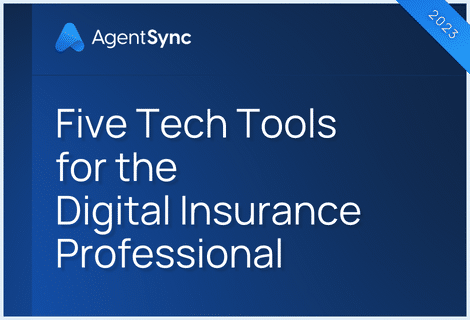

No matter how much we hate to think about it, the truth is, a career-ending disability can happen to anyone, at any time. Disability insurance (DI), which comes in the form of both short-term disability (STD) and long-term disability (LTD), is an insurance policy to help replace income that’s lost when a person is unable to work.
There are several common types of disability insurance, including those provided by the U.S. government, those provided by private employers, and policies sold to individuals. While each type of disability insurance policy has different definitions, criteria, and benefits offered, the purpose is ultimately to help a person afford their cost of living without income from employment when a disability prevents them from working.
Why is disability income protection important?
For most people, the ability to earn an income for many years into the future is the most valuable thing they possess. Think about it: A young person may not own a house, a car, or anything else of tangible value but if they have the potential to earn even $50,000 per year for the next thirty five years, that’s $1.75 million in lifetime earnings. If this person suddenly is unable to work, their entire future financial security is in jeopardy.
Even though the idea of becoming disabled can seem unlikely, it’s more common than people realize. The Social Security Administration estimates that more than 25 percent of today’s 20-year-olds will become disabled at some point before they reach the age of 67. If a disability (and we’ll get into what qualifies as a disability in a minute) stops you from earning an income, disability insurance–also known as disability benefits or disability income protection–can be an important lifeline to keep you from depleting your savings, going into debt, or even having to declare bankruptcy.
Types of disability insurance
In the U.S. the most common types of disability insurance include:
- Group disability policies offered through employers for short- and long-term disabilities
- Social Security Disability Insurance (SSDI)
- Individual disability insurance plans, often purchased by self-employed individuals and those whose employers don’t offer group coverage
Employer-sponsored group short-term disability insurance
As employers compete for talent, employee benefits continue to be a strong differentiator. Along with health, dental, and vision insurance, short-term disability insurance is a common employee benefit. Short-term disability insurance often covers some or all of an employee’s weekly salary for a period of time ranging from a few weeks to a few months. A common time period of short-term disability coverage is 90 days, following an elimination period (typically from a few days to a week) during which no benefits are paid.
When employers purchase group benefits for their employees, including short-term disability income protection, they usually obtain better rates, and employees are able to sign up without needing evidence of insurability (that is, medical exams and questions to prove their health) as long as they take the coverage the first time it’s offered to them.
Even when an employer doesn’t fully pay the short-term disability premium on behalf of its employees, employees can still usually get better pricing as members of a group than an individual could get shopping for short-term disability benefits on their own. Whether the premium is paid entirely by the employer, entirely by the employee, or split between them, short-term disability insurance is usually a low-cost way to make sure you wouldn’t be without a paycheck if you were injured or ill for a period of a few weeks to a few months.
Employer-sponsored group long-term disability insurance
Long-term disability insurance commonly begins after a short-term disability insurance policy ends. For example, if a short-term disability insurance plan provides 90 days of coverage but someone remains disabled and unable to work after that time period, then a long-term disability policy would begin to pay (assuming the coverage was effective prior to the onset of the disability!).
Just like short-term disability, employer-sponsored group long-term disability benefits can be paid for entirely by an employer, split between the employer and employee, or paid entirely by the employee. Either way, covered employees should get better rates as a member of a group than they would shopping for this coverage as an individual.
Some group long-term disability plans will continue to pay a portion of the employee’s salary up until the person reaches retirement age, if they remain disabled that entire time. Other plans have a maximum benefit period of a couple of years. This is because in the U.S. Social Security Disability Insurance may come into play for someone who is disabled, and employers are providing income protection for a period of time before government benefits kick in. It’s also simply more economical for an employer to provide some disability income replacement, such as for a maximum period of two years, than to provide coverage that can last decades. When weighing the pros and cons of offering disability insurance as an employee benefit, some employers choose plans with a finite maximum benefit period to ensure they can pay their employees’ premiums.
Social Security Disability Insurance (SSDI)
In the U.S., workers who have been disabled for at least five months, and whose disability is predicted to last more than 12 months, may qualify for SSDI. There are certain conditions, such as needing to have earned enough income in the past to qualify for the payout of SSDI benefits.
Before you get too excited about your SSDI coverage, keep in mind that the average monthly SSDI benefit is only $1,100, and that fewer than 40 percent of applicants for SSDI benefits end up receiving anything! With statistics like these, it’s no wonder people see the value in either accepting employer-sponsored disability insurance coverage or seeking out an individual policy on their own.
Individual disability insurance
If you’re self-employed or work for an employer that doesn’t offer disability insurance, or if you just want greater protection than that offered by an employer, there’s the option to purchase individual disability income protection from any number of insurance carriers.
Individual disability insurance policies work just like those purchased through an employer group, only in this case, you’ll pay rates based on your age and health status instead of paying a standard group rate that your employer gets for everyone. Because of this, it’s more affordable to purchase disability insurance while you’re younger and before any medical conditions arise. The majority of individual disability insurance policies will require some form of health questions or medical exams before offering coverage.
Just like other policies, individual disability insurance will replace a portion of your regular, pre-disability income for a period of weeks, months, or years, depending on the terms of the policy you purchase.
What does disability insurance cover?
Generally speaking, nearly anything that renders you physically unable to perform the duties of your job (or in some cases, any job) is considered a disability. This even includes (in most cases) mental and psychiatric conditions, as long as the policy doesn’t exclude them. Whether it’s an accidental injury, a serious illness, or even pregnancy and childbirth, getting benefits from a disability insurance policy usually hinges on your medical provider documenting what tasks you cannot perform, how severe your impairment is, and how long it’s expected to last.
Once it’s been established that you’re disabled (whether for a short period of time, or a long one), the policy will pay a percentage of your pre-disability earnings. In some cases, a policy will replace 100 percent of your income, while in others, a policy will replace a percentage of your income up to a monthly maximum that the highest earning workers will hit.
What doesn’t disability insurance cover?
There are some common exclusions in disability policies. These include a condition you were diagnosed with or treated for prior to starting coverage, known as a pre-existing condition. In some cases, you’ll be able to get disability benefits for conditions you had prior to your policy’s effective date if enough time has passed, for example, if you were not being treated for the condition within two years prior to the policy’s effective date.
Disability insurance also generally doesn’t cover accidents or illnesses that occur as part of your job because those are covered separately by a workers’ compensation insurance policy.
If you have a disability insurance policy, whether through an employer or individually, it’s important to read the fine print and know what will qualify you to use this coverage and what won’t.
Who needs disability income replacement?
Anyone who has a job, earns money, has bills, or supports a family could likely benefit from the peace of mind offered by a disability insurance policy. A small segment of the population may have enough money in the bank to pay their bills for life if they could never work again, but that just isn’t reality for most of us.
Even though the U.S. has a safety net in place through the SSDI program, it requires a lot of work to get approved and continue receiving Social Security Disability Insurance benefits, and most people who apply either don’t qualify or are denied benefits on technical grounds.
If all of this sounds confusing and you’re unsure about your own income protection, we recommend seeking out a licensed insurance agent for guidance based on your situation. But when it comes to the license status of that insurance agent, that’s where AgentSync can help. We can’t tell you which policy is right for you, but we can ensure each and every producer is properly credentialed to sell those policies. See AgentSync in action today.

